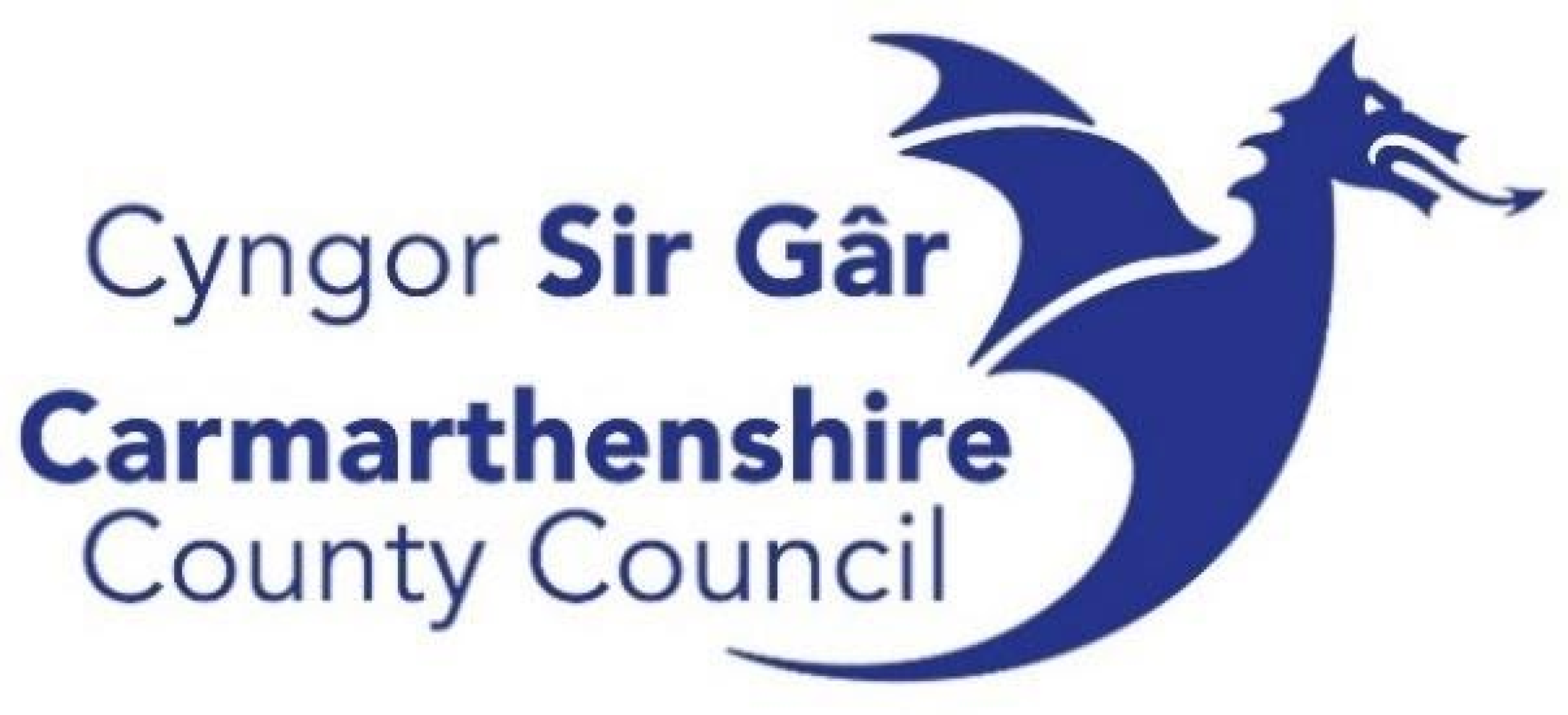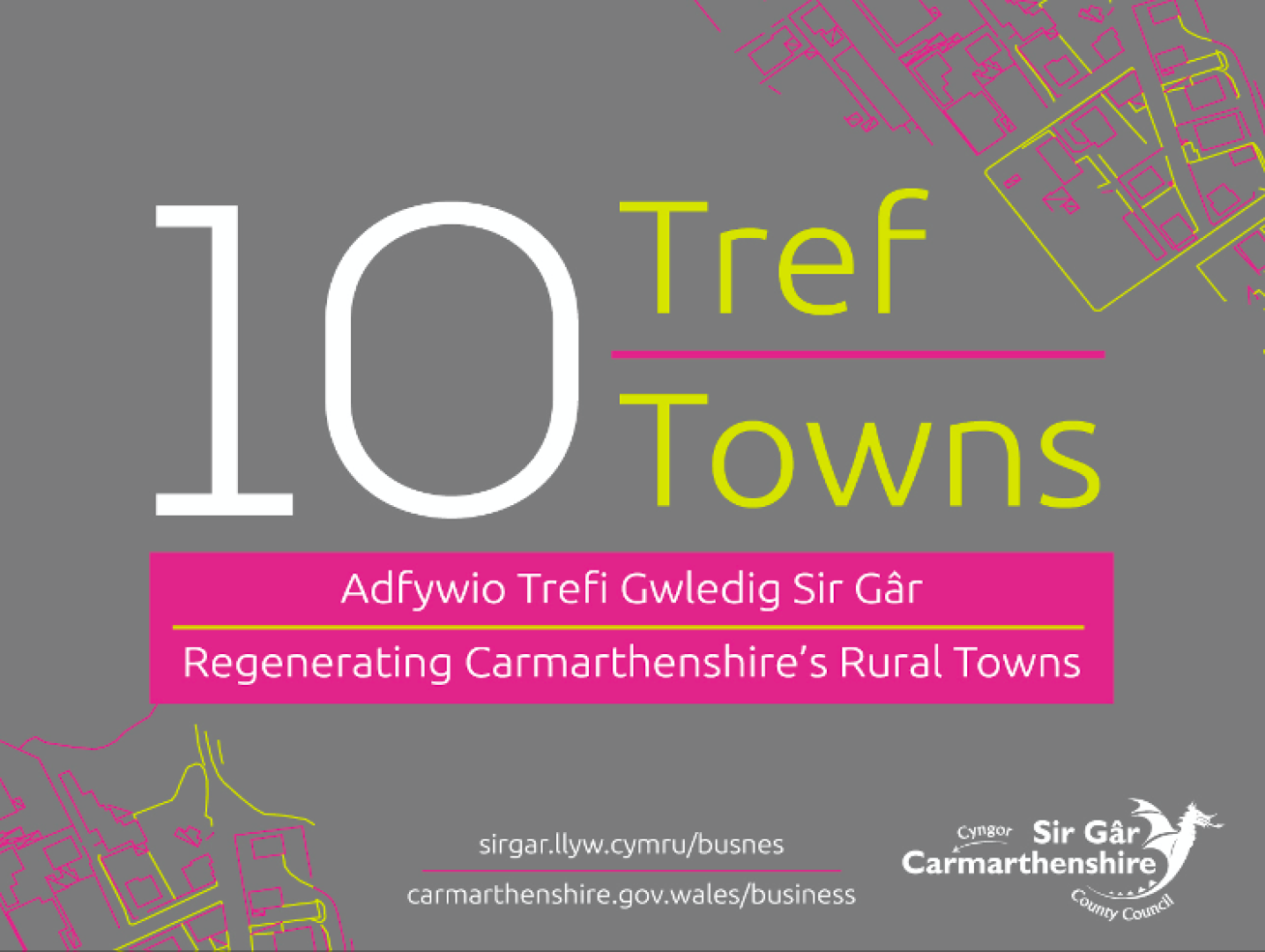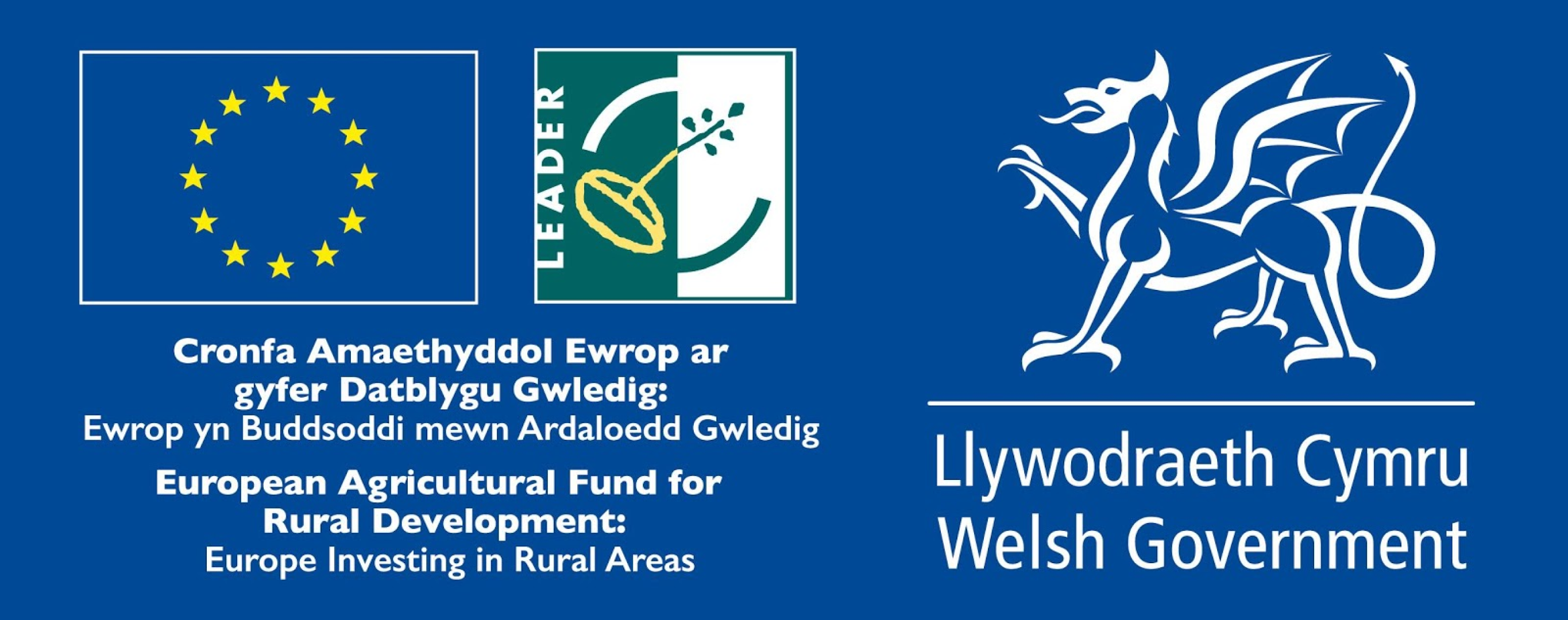About Newcastle Emlyn
The bigger picture
The context for the plan is shaped by wider social, economic and environmental issues facing rural Carmarthenshire including technology, climate emergency and decarbonisation, the ongoing impacts of COVID-19 and leaving the European Union (Brexit).
The strategic context also includes priorities of Carmarthenshire County Council, the Swansea Bay City Region and the Welsh Government, along with the growing influence of the Well-being of Future Generations (Wales) Act and local Well-being Plans.
A key aim of the Act calls on public bodies to be more agile to ensure they are able to respond to ever-changing economic circumstances and to maximise new opportunities for growth. Sustainable development is applied throughout, as well as new ways of working ensuring that local authorities take account of the long term, prevent problems occurring or getting worse, and adopt an integrated and collaborative people-focused approach.
The context for the plan is shaped by wider social, economic and environmental issues facing rural Carmarthenshire including technology, climate emergency and decarbonisation, the ongoing impacts of COVID-19 and leaving the European Union (Brexit).
The strategic context also includes priorities of Carmarthenshire County Council, the Swansea Bay City Region and the Welsh Government, along with the growing influence of the Well-being of Future Generations (Wales) Act and local Well-being Plans.
A key aim of the Act calls on public bodies to be more agile to ensure they are able to respond to ever-changing economic circumstances and to maximise new opportunities for growth. Sustainable development is applied throughout, as well as new ways of working ensuring that local authorities take account of the long term, prevent problems occurring or getting worse, and adopt an integrated and collaborative people-focused approach.
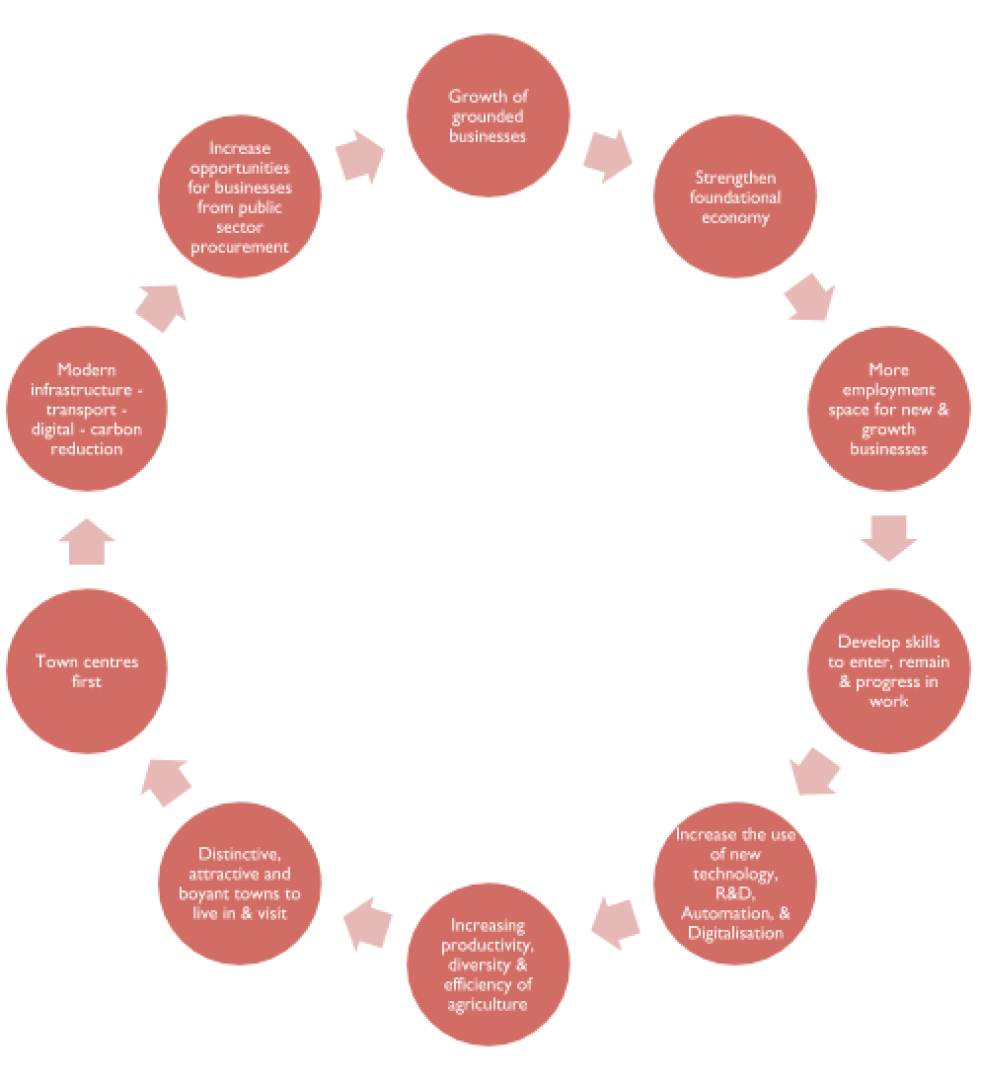
Newcastle Emlyn today
Newcastle Emlyn is located in the Teifi Valley between Cardigan and Lampeter and represents a traditional market town which serves a wide and largely rural community astride the River Teifi in both Carmarthenshire and Ceredigion.
The town supports several large regional employers including Dairy Partners together with a number of well occupied industrial areas hosting a range of enterprises including biotech and IT businesses. The town also directly supports the rural economy through the livestock market and associated feed merchants, machinery and engineering uses. Other notable industries include construction and numerous local services and trades that comprise up the foundational economy.
The rural hinterland supports a wider range of agricultural and land-based industries including food producers and tourism businesses. The distinctive and historic town centre has a good mix of retail and services with a particular focus on convenience, food and drink and speciality retail. Outside of the centre, the leisure centre and secondary school reflect the town's role as a key settlement in the north of the county.
Overall, Newcastle Emlyn performs an important destination and service centre for employment, community, education, sport and retail needs of the wider area including Llangeler and Llandyfriog.
Newcastle Emlyn is located in the Teifi Valley between Cardigan and Lampeter and represents a traditional market town which serves a wide and largely rural community astride the River Teifi in both Carmarthenshire and Ceredigion.
The town supports several large regional employers including Dairy Partners together with a number of well occupied industrial areas hosting a range of enterprises including biotech and IT businesses. The town also directly supports the rural economy through the livestock market and associated feed merchants, machinery and engineering uses. Other notable industries include construction and numerous local services and trades that comprise up the foundational economy.
The rural hinterland supports a wider range of agricultural and land-based industries including food producers and tourism businesses. The distinctive and historic town centre has a good mix of retail and services with a particular focus on convenience, food and drink and speciality retail. Outside of the centre, the leisure centre and secondary school reflect the town's role as a key settlement in the north of the county.
Overall, Newcastle Emlyn performs an important destination and service centre for employment, community, education, sport and retail needs of the wider area including Llangeler and Llandyfriog.
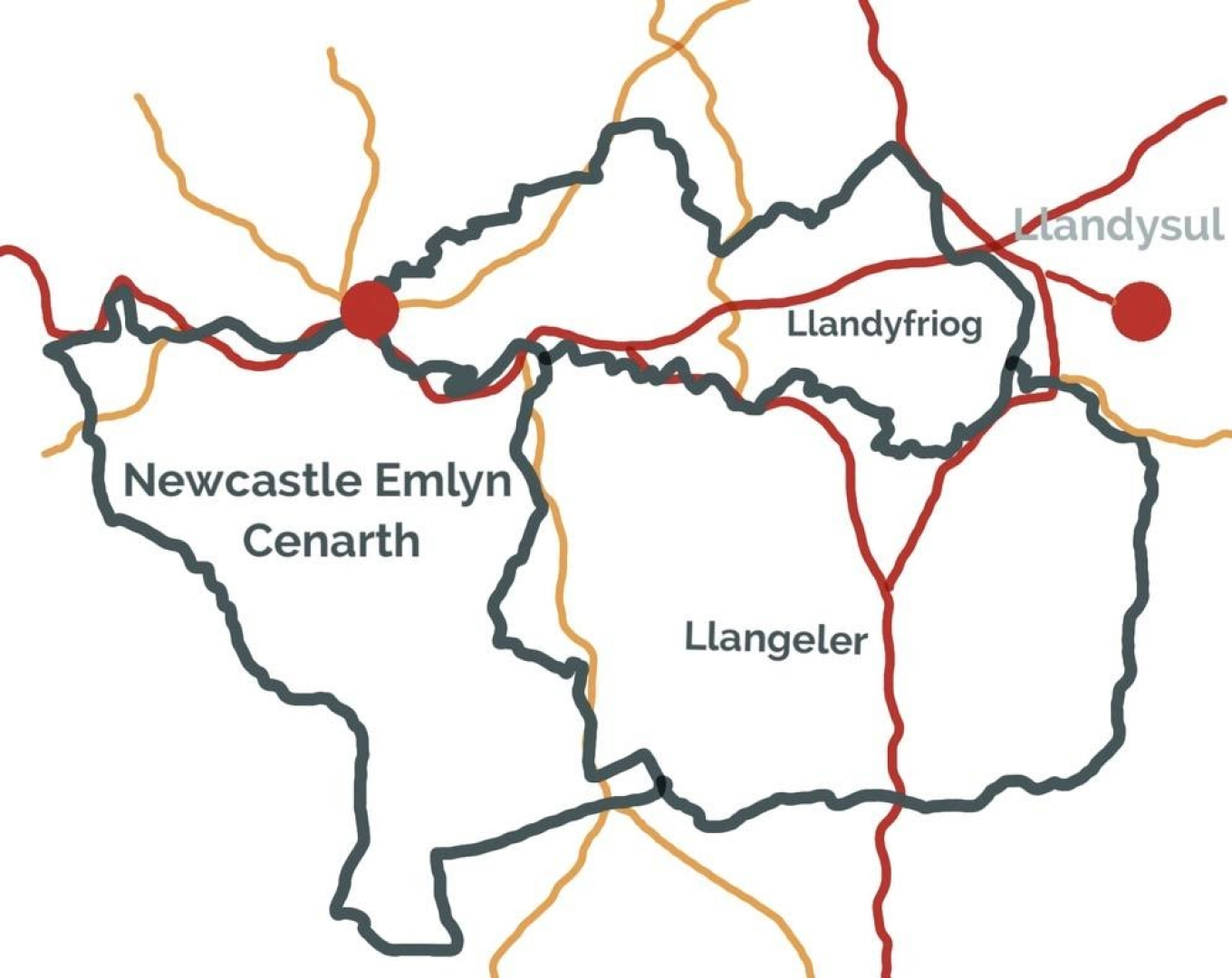
Socio-economic picture
The population of Newcastle Emlyn and hinterland is 7,380 (based on Cenarth, Llangeler and Llandyfriog wards). In comparison with rural Carmarthenshire - within the last ten years - the area has experienced:
- small population growth
- a growing older-aged population
- decline in the working-age population
- below-average economic activity and full-time employment
- lower than average household incomes
- lower-skilled local economy
- higher than average levels of home working and self-employment
- above average house prices
- 6% decline in the ability to speak the Welsh language
The data shows a large part of the local economy is dependent on part-time, low skilled and lower wage incomes.
| Rural County | Newcastle Emlyn area | |
| Population | Increase 1.8% | Decline 1.3% |
| Working age | Decline 3% | Decline 3.8% |
| Gross household income | £28,622 | £26,520 |
| Median house prices | £135k | £154k - £180k |
| Economically active | 66% | 63% |
| Full-time employment | 33% | 25% |
| Work from home | 7% | 13% |
| Self-employed | 14% | 22% |
| Largest occupation | Skilled trades 19% | Skilled trades 22% |
| No skills | 25% | 25% |
| Higher qualifications | 30% | 30% |
| Employed agriculture | 6% | 11% |
Sources: ONS Census & NOMIS - Baseline study
Newcastle Emlyn and the surrounding area supports a diverse range of business activities with over 270 identified businesses, including the largest employer (Dairy Partners) through to micro, small and medium-sized companies.
Dairy Partners operates a cheese product factory with over 100 employees and 140 local farms supplying milk from within a 40-mile radius. The business is not only the towns largest employer it is also a key link with the agricultural community.
The town also has strengths in the food and drink, IT and biotech sectors including Micropharm and Caws Cenarth Cheese. The livestock market in the town centre remains an integral feature in the economic and social function of the area which has grown significantly in the last year following the closure of other regional markets.
Overall, the town's economy appears to have a robust business base, including a major employer, alongside grounded and growing local firms and the presence of business support agency Antur Cymru (Teifi).
The largest employment sectors are identified as:
- 16% wholesale and retail trade
- 13% human health and social work
- 11% agriculture
- healthy levels of localised demand and occupancy
- a varied range and mix of accommodation, including dedicated business park although the majority of stock is older and secondary quality
- lack of suitable floor space to support existing to grow and expand
- lack of small incubator and starter units
Town economy
The town centre has over 80 businesses with a diverse and interesting mix of retail, hospitality, services and offices. The retail includes a good mix of main convenience facilities (Co-op and C K food store) and independent retailers (butchers, deli, specialist foods, bakery and off licence). There is a varied comparison (non-food) offer which is mainly independent and includes home furnishings, clothing, electrical, jewellery/arts/gifts, vintage/antiques, lifestyle and small garden centre. The town is known further afield for the quality of the women's fashion, and there are several speciality and destination retailers adding to the quality and attractiveness of the centre. The presence of several artisan, craft and ethically driven businesses also gives the centre an original and unique feeling.
The hospitality offer is equally strong with a good variety and choice of cafes/bistro, takeaways and public houses together with the Emlyn Hotel (and restaurant). There are signs of a basic level evening economy although without much in terms of evening leisure offer apart from the Attic Theatre.
Most of the essential local services also exist with a chemist/pharmacy, opticians, beauty salon/hairdressers, dental facilities, post office whilst local community facilities include Cawdor Hall, police station and library. The main weakness has been the loss of bank facilities and free ATM's in the centre. The nearest banks are in Cardigan and Carmarthen. Several professional services operate from offices and include estate agents, solicitors, accountants/financial advisors and architects which add to the variety and vibrancy of the town centre.
The majority of the town centre is within a Conservation Area with traditional frontages, a distinctive town hall and Clock Tower. The colourfully painted buildings add to the overall charm and attractiveness of the centre.
Despite the general vibrancy of the centre, 10% of the properties are currently vacant including several large and difficult to let units.
Visitor economy
The visitor economy appears to be low key compared to the nearby coastal locations although there is much potential for growth. The reasons to visit the town include the charming and slightly quirky retail centre, the castle ruins and annual events programme including the food festival, fair trade town events and Victorian Christmas. The town does not offer enough activity to hold people in the town for much more than a few hours and this is reflected in the small amount of overnight accommodation including the Emlyn Hotel restaurant and spa and handful of B&Bs and caravan/camping facilities at Afon Teifi and Dolbryn.
However, outside of the town, there are several higher profile natural and industrial heritage attractions including Cenarth Falls (identified as part of the Celtic Routes Initiative), the Cenarth National Coracle Museum, the National Wool Museum and Teifi Valley railway (which like all attractions have been impacted by lockdown restrictions).
Cycling is one of Carmarthenshire's visitor destination priorities and the town has been promoted as the starting point for the Teifi River Tour. The Sustrans National Cycle Route 82 also passes through Newcastle Emlyn and connects with Fishguard.
The visitor economy appears to be low key compared to the nearby coastal locations although there is much potential for growth. The reasons to visit the town include the charming and slightly quirky retail centre, the castle ruins and annual events programme including the food festival, fair trade town events and Victorian Christmas. The town does not offer enough activity to hold people in the town for much more than a few hours and this is reflected in the small amount of overnight accommodation including the Emlyn Hotel restaurant and spa and handful of B&Bs and caravan/camping facilities at Afon Teifi and Dolbryn.
However, outside of the town, there are several higher profile natural and industrial heritage attractions including Cenarth Falls (identified as part of the Celtic Routes Initiative), the Cenarth National Coracle Museum, the National Wool Museum and Teifi Valley railway (which like all attractions have been impacted by lockdown restrictions).
Cycling is one of Carmarthenshire's visitor destination priorities and the town has been promoted as the starting point for the Teifi River Tour. The Sustrans National Cycle Route 82 also passes through Newcastle Emlyn and connects with Fishguard.
Brand and marketing
To grow the visitor economy of Newcastle Emlyn, there is a need to update and consolidate the current online marketing to showcase local businesses, events and experiences the area and community have to offer. This will help to differentiate the town and refresh how Newcastle Emlyn brands and communicates itself.
Presently, the Visit Newcastle Emlyn website communicates positively about the area prioritising the history and showcases some of the attractions on offer. The site links to a more up-to-date Facebook page which has healthy, but limited, interaction. However, the website feels tired and in need of regular update. The language and tone suggest that Newcastle Emlyn is a place for people of the older generation to visit and there is little on offer for families or younger people. The overall feeling is that Newcastle Emlyn is neither vibrant nor different.
Neither the Town Council nor any of the local business or events sites for the area appear on the first page of search results when entered 'Newcastle Emlyn' and have limited effectiveness to a wider audience. The Food Festival event site is also low key and could do more to show enticing insight into the festival, it's history or future offers.
At the county level, the Discover Carmarthenshire website is more successful at promoting Newcastle Emlyn alongside the Teifi Valley, including its འ hours in Newcastle Emlyn' feature. This is complemented by Tripadvisor and its comprehensive 'things to do', accommodation and restaurants review.
To grow the visitor economy of Newcastle Emlyn, there is a need to update and consolidate the current online marketing to showcase local businesses, events and experiences the area and community have to offer. This will help to differentiate the town and refresh how Newcastle Emlyn brands and communicates itself.
Presently, the Visit Newcastle Emlyn website communicates positively about the area prioritising the history and showcases some of the attractions on offer. The site links to a more up-to-date Facebook page which has healthy, but limited, interaction. However, the website feels tired and in need of regular update. The language and tone suggest that Newcastle Emlyn is a place for people of the older generation to visit and there is little on offer for families or younger people. The overall feeling is that Newcastle Emlyn is neither vibrant nor different.
Neither the Town Council nor any of the local business or events sites for the area appear on the first page of search results when entered 'Newcastle Emlyn' and have limited effectiveness to a wider audience. The Food Festival event site is also low key and could do more to show enticing insight into the festival, it's history or future offers.
At the county level, the Discover Carmarthenshire website is more successful at promoting Newcastle Emlyn alongside the Teifi Valley, including its འ hours in Newcastle Emlyn' feature. This is complemented by Tripadvisor and its comprehensive 'things to do', accommodation and restaurants review.
Transport and movement
The roads serving Newcastle Emlyn are largely a network of rural A and B and lower classification roads. Connections are largely fragmented travelling north to south and more direct travelling east to west. The main challenge is in providing sustainable integrated transport for the area.
Within the town, traffic levels combined with the narrow carriageway/pavements especially at Sycamore Street, impact on pedestrian safety and quality of the town centre experience. There is a good level of car parking including the main Maes Parcio.
Travel to work patterns provides a picture of commuter behaviour and understanding of the number of people travelling from the town area to a place of work (shown red) or from another place into the town for work (shown blue). The figure indicates how Newcastle Emlyn is also reliant on Carmarthen and Cardigan for employment.
The roads serving Newcastle Emlyn are largely a network of rural A and B and lower classification roads. Connections are largely fragmented travelling north to south and more direct travelling east to west. The main challenge is in providing sustainable integrated transport for the area.
Within the town, traffic levels combined with the narrow carriageway/pavements especially at Sycamore Street, impact on pedestrian safety and quality of the town centre experience. There is a good level of car parking including the main Maes Parcio.
Travel to work patterns provides a picture of commuter behaviour and understanding of the number of people travelling from the town area to a place of work (shown red) or from another place into the town for work (shown blue). The figure indicates how Newcastle Emlyn is also reliant on Carmarthen and Cardigan for employment.
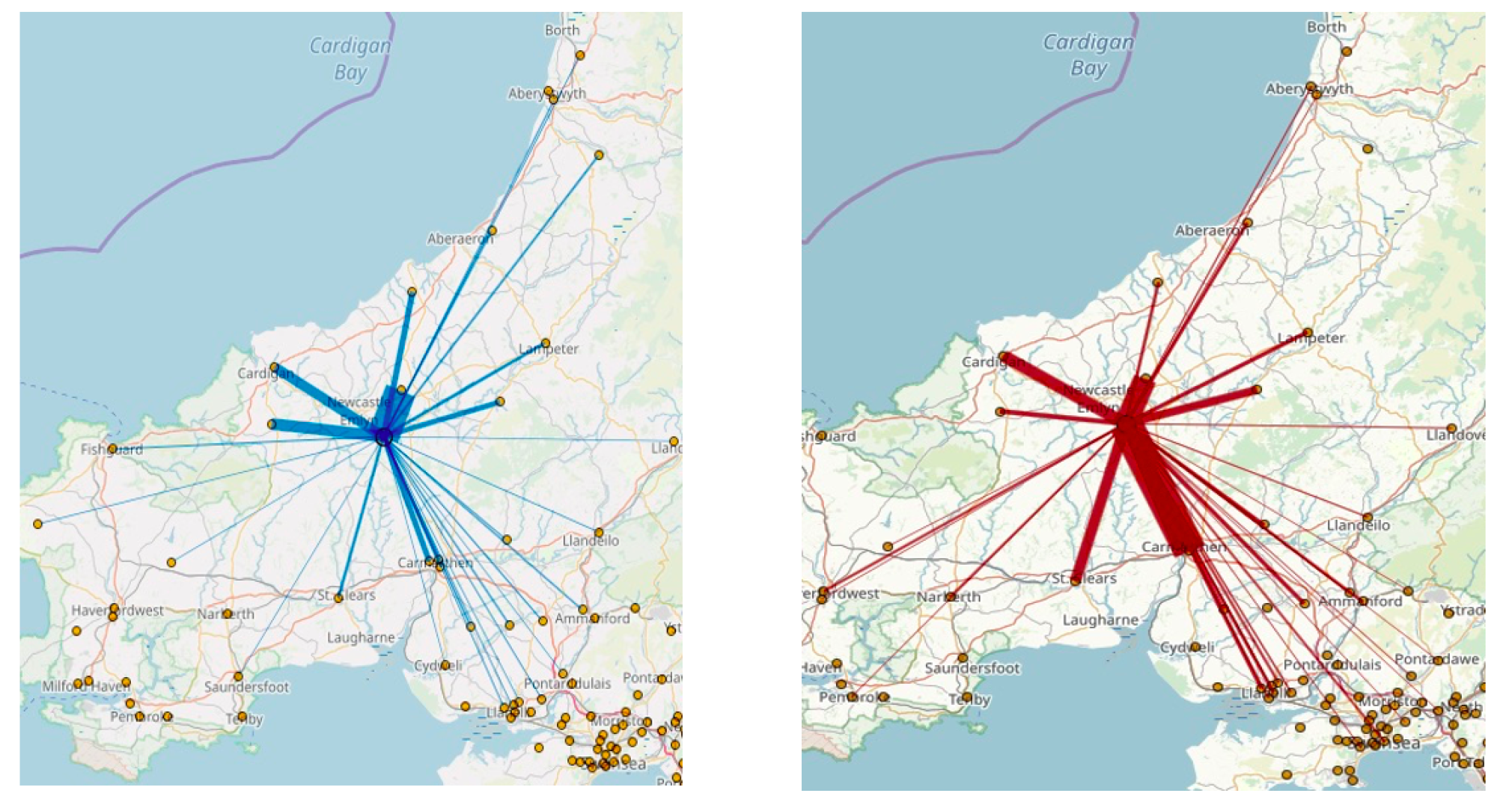
Source: 2011 Census - DataShine: Commute
Broadband and digital connectivity
The central town and immediate rural area appear to have good connectivity, although it is clear that there are areas in the wider hinterland without sufficient bandwidth. Overall there are 888 (71%) of the 1,235 premises in the Newcastle Emlyn postcode area without non-superfast broadband.
The central town and immediate rural area appear to have good connectivity, although it is clear that there are areas in the wider hinterland without sufficient bandwidth. Overall there are 888 (71%) of the 1,235 premises in the Newcastle Emlyn postcode area without non-superfast broadband.
Planning, development & environment
Growth in Newcastle Emlyn is constrained by the presence of the River Teifi with large areas to the east and west at risk of flooding whilst the town is a priority area for future NRW flood preventative works. The presence of the castle and Conservation Area is also a restriction on future development within much of the town centre.
In terms of future growth and development, the Revised Local Development Plan considers the area suitable for limited growth with three housing allocations (51 new homes). However, no new employment land has been identified beyond the existing 'safeguarded' employment areas.
Local estate agents report the need for more homes, driven by demand from local families and downsizers/retired together with healthy demand for rural smallholdings, including people relocating to the area. Overall there is the need for less expensive housing, to address the imbalance between higher house prices and limited supply of appropriate homes in rural areas, particularly for one-person and couples.
The absence of any future employment land allocation for the town is a concern particularly given the high demand and lack of supply of small and medium-sized stock. However, there are available sites and premises which offer the potential for redevelopment.
Growth in Newcastle Emlyn is constrained by the presence of the River Teifi with large areas to the east and west at risk of flooding whilst the town is a priority area for future NRW flood preventative works. The presence of the castle and Conservation Area is also a restriction on future development within much of the town centre.
In terms of future growth and development, the Revised Local Development Plan considers the area suitable for limited growth with three housing allocations (51 new homes). However, no new employment land has been identified beyond the existing 'safeguarded' employment areas.
Local estate agents report the need for more homes, driven by demand from local families and downsizers/retired together with healthy demand for rural smallholdings, including people relocating to the area. Overall there is the need for less expensive housing, to address the imbalance between higher house prices and limited supply of appropriate homes in rural areas, particularly for one-person and couples.
The absence of any future employment land allocation for the town is a concern particularly given the high demand and lack of supply of small and medium-sized stock. However, there are available sites and premises which offer the potential for redevelopment.






